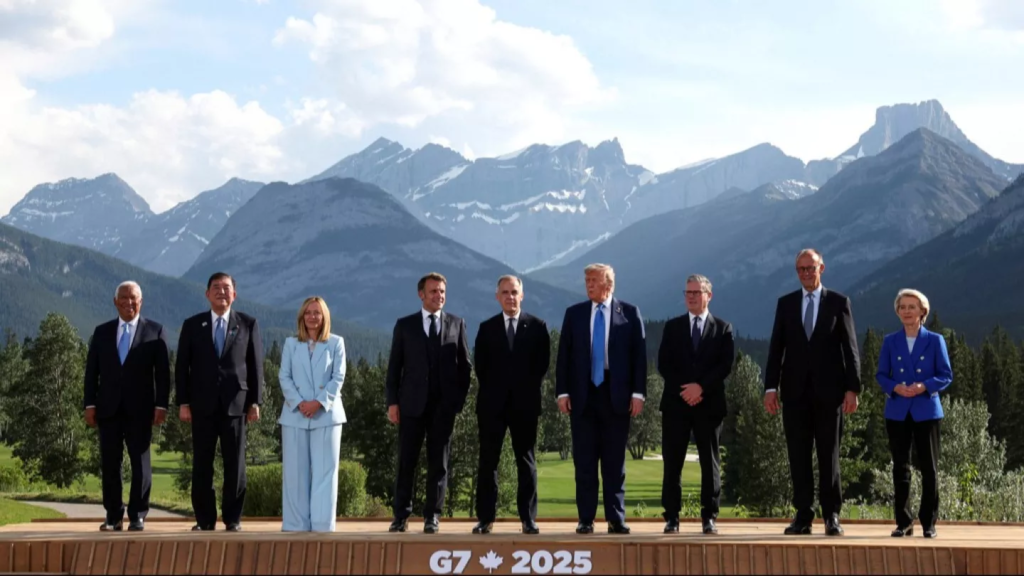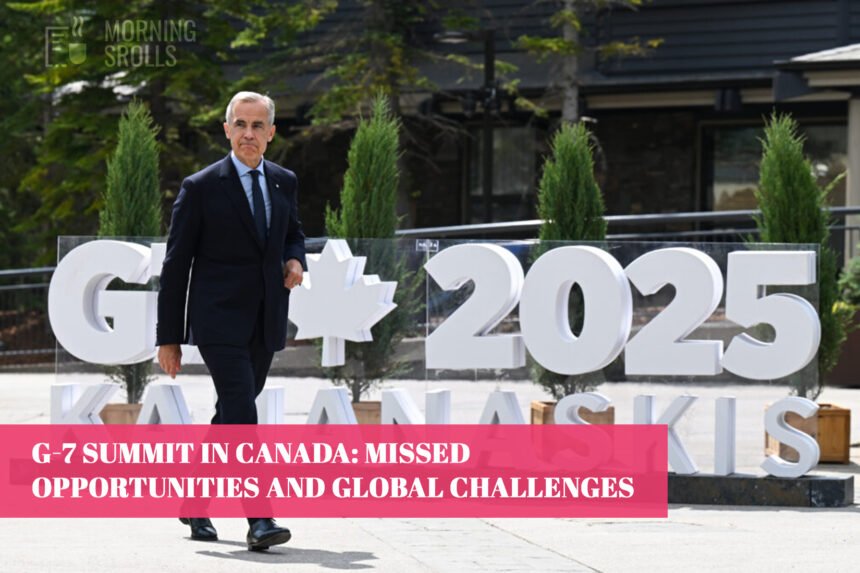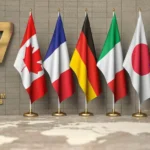The G-7, a group comprising the world’s most developed economies, recently marked its 50th anniversary. Ideally, at this milestone, the G-7 should have looked strong, united, and confident in handling the world’s toughest problems. However, the 2025 G-7 Summit and Outreach session in Kananaskis, Canada, showed the opposite. The group appeared divided and struggled to respond effectively to some of the world’s most pressing global crises.
Struggling with Global Conflicts
This year’s summit took place against the backdrop of several major international conflicts. The war between Russia and Ukraine continues to escalate, while tensions between Israel and Iran have grown, and Israel’s ongoing military actions in Gaza remain a major concern. Despite these urgent issues, the G-7 was unable to present a united front or take decisive action.
Trade Tensions and U.S. Policy Shifts
Another big problem for the G-7 has been the disruption in global trade, largely due to the U.S. government’s approach under President Donald Trump. His administration has imposed reciprocal tariffs on many countries, creating uncertainty and instability in global markets.
The summit itself got off to a rocky start. Canada, the host country, had just gone through an unexpected election a few months before the event. The new government, led by Mark Carney, was still settling in, which meant that invitations to key leaders like India’s Prime Minister Narendra Modi were sent out only days before the summit began.
Unpredictability in U.S. Foreign Policy
Recent changes in U.S. foreign and trade policy have also left the G-7 struggling to keep up. President Trump’s shifting stance on the Russia-Ukraine conflict and his unclear approach to China have been particularly challenging for the group. At the summit in Kananaskis, Trump even suggested expanding the G7 to include Russia and China, turning it into a “G9.” This idea was not well received, especially by Ukrainian President Volodymyr Zelenskyy, who was present as a special guest.

Trump’s unpredictable behavior continued. Although he had previously called himself a “Peace-time President,” he shifted to openly supporting Israel’s military actions. The U.S. refused to agree to a draft statement from the G7 that called for reducing violence or criticized Israel’s actions. Instead, the U.S. pushed for a statement that focused on condemning Iran. To make matters worse, Trump left the summit a day early, further weakening the group’s ability to respond collectively.
No Joint Statement on Key Issues
Because of these divisions, the G7 could not agree on a joint statement about the most important topics discussed at the summit. Instead, only a Chair’s Summary was released to address the ongoing crisis. The group did manage to issue statements on less controversial subjects, such as artificial intelligence, quantum computing, the supply of important minerals, wildfire prevention, and transnational repression. However, there was no statement on terrorism, which India had hoped for.
India’s Role and Outcomes
For Prime Minister Modi, perhaps the most useful part of the trip was his meeting with Canadian Prime Minister Mark Carney. During their talks, they agreed to restore the positions of Indian and Canadian High Commissioners, aiming to repair relations that had been damaged by the Nijjar case—a controversy involving allegations of foreign interference and extremism.
Despite this step forward, the Canadian government has not changed its stance on the Nijjar case or on addressing Khalistani extremism. The G7’s statement on Transnational Repression (TNR) did not specifically mention any country, but it clearly referred to the accusations Canada has made against India, as well as similar concerns involving China, Russia, and Iran.
Rethinking India’s Participation
Given the limited results of this year’s summit, India may need to reconsider the value of taking part in the G7 process. Sending the Prime Minister more than 11,000 kilometers to speak at just one outreach session of a divided and uncoordinated summit might not be the best use of the country’s time and resources.
The 2025 G7 Summit in Canada exposed deep divisions within the group and raised questions about its ability to handle global challenges. With ongoing wars, trade disputes, and shifting alliances, the G7 struggled to present a united response. For India, the summit was a chance to engage with other world leaders and address important issues, but the overall impact was limited. As the world continues to face complex problems, the G7 will need to find new ways to work together if it wants to remain relevant and effective in the years ahead.
MUST READ: G7 Summit 2025 in Canada: Key Highlights and India’s Role










